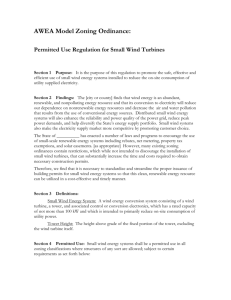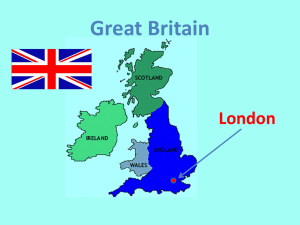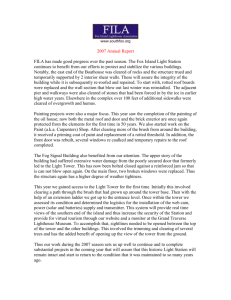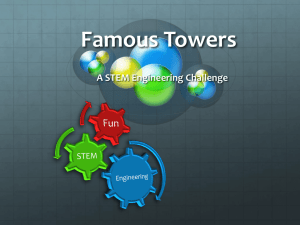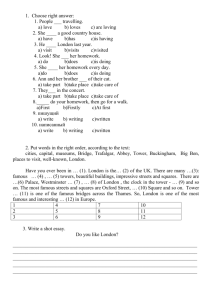Small Wind Innovation Zone Sample Ordinance
advertisement
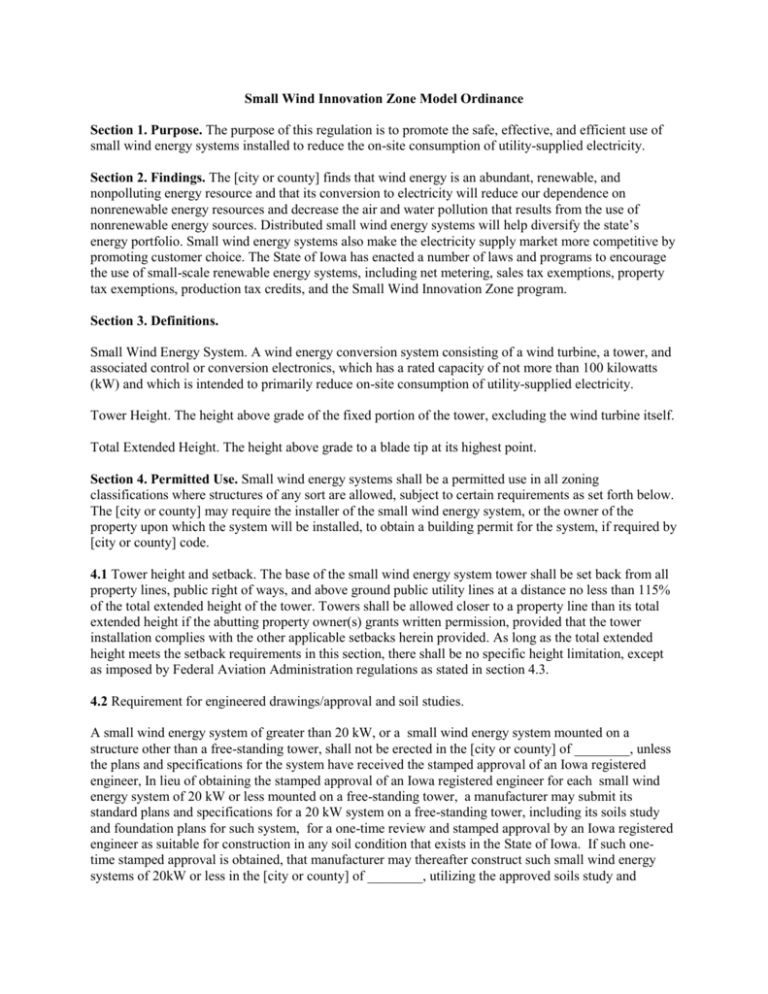
Small Wind Innovation Zone Model Ordinance Section 1. Purpose. The purpose of this regulation is to promote the safe, effective, and efficient use of small wind energy systems installed to reduce the on-site consumption of utility-supplied electricity. Section 2. Findings. The [city or county] finds that wind energy is an abundant, renewable, and nonpolluting energy resource and that its conversion to electricity will reduce our dependence on nonrenewable energy resources and decrease the air and water pollution that results from the use of nonrenewable energy sources. Distributed small wind energy systems will help diversify the state’s energy portfolio. Small wind energy systems also make the electricity supply market more competitive by promoting customer choice. The State of Iowa has enacted a number of laws and programs to encourage the use of small-scale renewable energy systems, including net metering, sales tax exemptions, property tax exemptions, production tax credits, and the Small Wind Innovation Zone program. Section 3. Definitions. Small Wind Energy System. A wind energy conversion system consisting of a wind turbine, a tower, and associated control or conversion electronics, which has a rated capacity of not more than 100 kilowatts (kW) and which is intended to primarily reduce on-site consumption of utility-supplied electricity. Tower Height. The height above grade of the fixed portion of the tower, excluding the wind turbine itself. Total Extended Height. The height above grade to a blade tip at its highest point. Section 4. Permitted Use. Small wind energy systems shall be a permitted use in all zoning classifications where structures of any sort are allowed, subject to certain requirements as set forth below. The [city or county] may require the installer of the small wind energy system, or the owner of the property upon which the system will be installed, to obtain a building permit for the system, if required by [city or county] code. 4.1 Tower height and setback. The base of the small wind energy system tower shall be set back from all property lines, public right of ways, and above ground public utility lines at a distance no less than 115% of the total extended height of the tower. Towers shall be allowed closer to a property line than its total extended height if the abutting property owner(s) grants written permission, provided that the tower installation complies with the other applicable setbacks herein provided. As long as the total extended height meets the setback requirements in this section, there shall be no specific height limitation, except as imposed by Federal Aviation Administration regulations as stated in section 4.3. 4.2 Requirement for engineered drawings/approval and soil studies. A small wind energy system of greater than 20 kW, or a small wind energy system mounted on a structure other than a free-standing tower, shall not be erected in the [city or county] of ________, unless the plans and specifications for the system have received the stamped approval of an Iowa registered engineer, In lieu of obtaining the stamped approval of an Iowa registered engineer for each small wind energy system of 20 kW or less mounted on a free-standing tower, a manufacturer may submit its standard plans and specifications for a 20 kW system on a free-standing tower, including its soils study and foundation plans for such system, for a one-time review and stamped approval by an Iowa registered engineer as suitable for construction in any soil condition that exists in the State of Iowa. If such onetime stamped approval is obtained, that manufacturer may thereafter construct such small wind energy systems of 20kW or less in the [city or county] of ________, utilizing the approved soils study and foundation plans for the 20 kW small wind energy system, without obtaining and presenting the stamped approval of an Iowa registered engineer for each such installation. 4.3. Compliance with Federal Aviation Administration Regulations (FAA). No small wind energy system shall be constructed, altered, or maintained so as to project above any of the imaginary airspace surfaces described in FAR Part 77 of the FAA guidance on airspace protection. 4.4. Safety. Any climbing foot pegs or rungs below 12 feet of a freestanding tower shall be removed to prevent unauthorized climbing. For lattice or guyed towers, sheets of metal or wood may be fastened to the bottom tower section such that it cannot readily be climbed. 4.5. Sound. Sound produced by the small wind energy system under normal operating conditions, as measured at the property line, shall: a) not produce sound at a level that would constitute a nuisance; b) shall comply with any local ordinance regulating the volume of sound as a nuisance, if applicable. Sound levels, however, may be exceeded during short-term events out of anyone’s control, such as utility outages and/or severe wind storms. 4.6. Compliance with National Electric Code. Building permit applications for small wind energy systems shall be accompanied by a line drawing of the electrical components, as supplied by the manufacturer, in sufficient detail to allow for a determination that the design and manner of installation conforms to the state National Electric Code. 4.7. Utility Notification: No small wind energy system shall be installed until evidence has been given that the utility company has authorized interconnection of the small wind energy system to its electric distribution or transmission, under an agreement approved by and subject to regulation adopted by the Iowa Utilities Board. Properties not connected the public utility system shall be exempt from this requirement. 4.8. Insurance. A person seeking a building permit to erect a small wind energy system shall provide evidence, in the form of a certificate of insurance satisfactory to the [city or county], showing general liability insurance coverage for the installation and operation of the system under a standard homeowner’s or standard business owner’s insurance policy, separate and distinct from any insurance requirements of a public utility. 4.9. Abandonment. If a wind turbine is inoperable for six consecutive months, the owner shall be notified that they must, within six months of receiving the notice, restore the small wind energy system to operating condition. If the owner fails to restore the system to operating condition within the six month time frame, it shall be considered abandoned and the owner shall be required, at owner’s expense, to remove the small wind energy system. A small wind energy system that has been abandoned may be abated as a public nuisance. 4.10. Signage. No signs, other than appropriate warning signs, or standard manufacturer’s or installer’s identification signage, shall be displayed on a wind generator, tower, building, or other structure associated with a small wind energy system, subject to local sign regulation if any. 4.11. Lighting. No illumination of the turbine or tower shall be allowed unless required by the FAA or unless allowed by applicable [city or county] ordinance.


